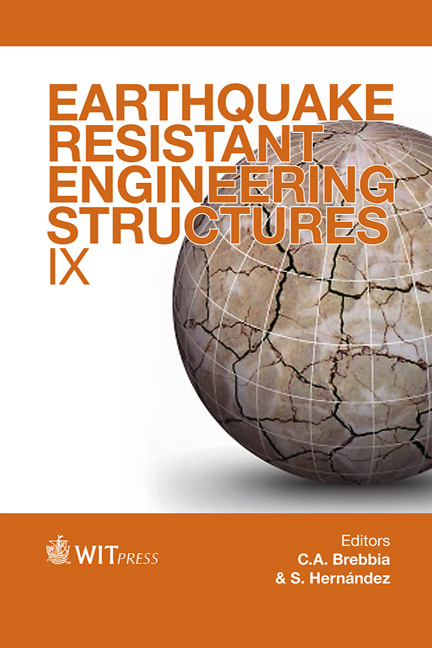Assessment Of A Vulnerability Model Against Post-earthquake Damage Data: The Case Study Of The Historic City Centre Of L’Aquila In Italy
Price
Free (open access)
Transaction
Volume
132
Pages
12
Page Range
393 - 404
Published
2013
Size
707 kb
Paper DOI
10.2495/ERES130321
Copyright
WIT Press
Author(s)
R. Ferlito, M. Guarascio & M. Zucconi
Abstract
The quantitative measure of seismic vulnerability is a necessary requirement for prevention and for an optimal emergency management. Before L’Aquila’s earthquake in 2009, the National Civil Protection, in collaboration with the University of L’Aquila, developed a model (Beolchini, \“Definition of an indicator of urban vulnerability” (2003)) to evaluate the criticality seismic of urban centers by using a multidisciplinary approach. The study has led to the definition of an urban vulnerability index, that allows to identify the most critical urban centers and the problematic elements, in order to establish a hierarchy for preventative measures and for an efficient emergency management (Calvi et al. \“Development of seismic vulnerability assessment methodologies over the past 30 years” (2006). One of the features of this evaluation is that it allows a simultaneous analysis of the multiple factors involved in risk assessment (Ferlito and Pizza \“Modello di vulnerabilità di un centro urbano. Metodologia per la valutazione speditiva della vulnerabilità della viabilità d’emergenza” (2011); Ferlito et al. \“Danger treblement de terre et mesure du risque à L’Aquila” (2010)). After the seismic event occurred, same tests have been done to verify the validity of the model on the part of buildings, by comparing the criticality evaluated and damage suffered by the buildings, taking into account the local effects resulting from operations of microzonation. The seismic vulnerability
Keywords
vulnerability, seismic risk, building damage, prevention, emergency management





